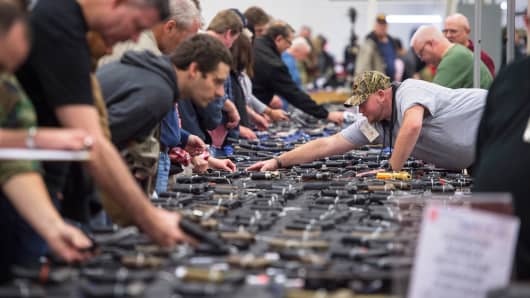San Bernardino is not the first mass shooting of 2015, but there's little consensus on how many there have been.
It turns out there's no standardized way of measuring mass shootings in the U.S. Some methods say the number of mass shootings is reaching unprecedented levels, while some say the number has actually dropped in recent years.
Almost as quickly as news spread about the shooting in California, news outlets around the country were declaring this the year of the mass shooter. "TODAY" wrote in a headline that there have been "355 mass shootings in 336 days: US has more incidents than days in 2015." On the other hand, Mother Jones, which maintains its own tracker of mass shootings, claims there have been 72 since 1982.
















